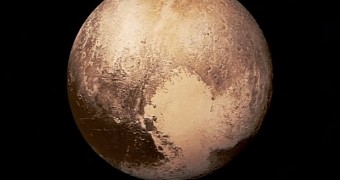Pluto was discovered in February 1930 by American astronomer Clyde William Tombaugh. At first, it was classified as a proper planet.
Then, about a decade ago, the International Astronomical Union decided it wasn't worthy of this name and labeled the orb a dwarf planet.
All the same, scientists didn't lose interest in studying it. It was just months ago, on July 14, that NASA's New Horizons probe completed a flyby of the Pluto system.
During this historic flyby, the New Horizons spacecraft successfully imaged the orb, together with its moons, in unprecedented detail.
Mission scientists over at NASA are still downloading images and data. Some of the views of Pluto that New Horizons has so far sent our way are included in the video below.
As it turns out, this dwarf planet at the edge of the Solar System is not very different from Earth. It has mountains, plains and even an atmosphere.
There are also impact craters, dune-like ridges, and even flowing glaciers, albeit ones made of nitrogen and not water, like here on our planet.
In fact, NASA scientists say that, contrary to their expectations when they launched the New Horizons probe, Pluto is turning out to be a very complex world, at least as far as its topography goes.
“Pluto is showing us a diversity of landforms and complexity of processes that rival anything we've seen in the Solar System,” New Horizons Principal Investigator Alan Stern said in an interview.
“If an artist had painted this Pluto before our flyby, I probably would have called it over the top - but that's what is actually there,” he added.

 14 DAY TRIAL //
14 DAY TRIAL // 